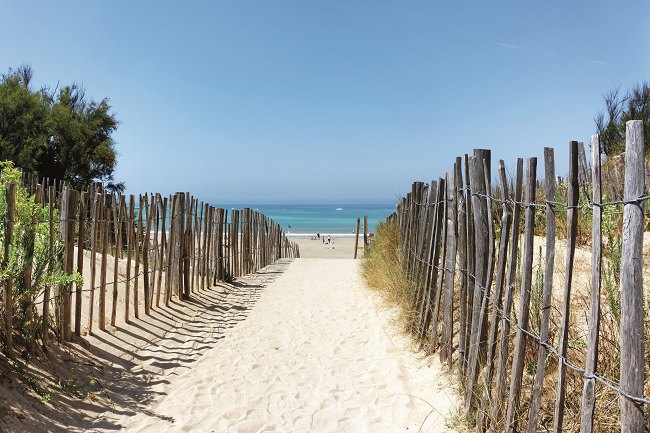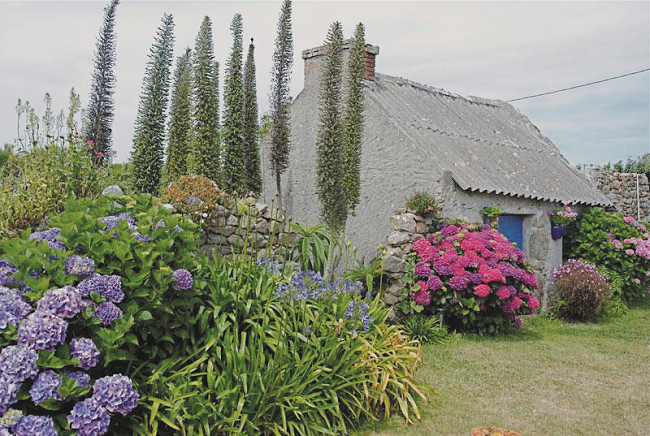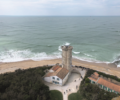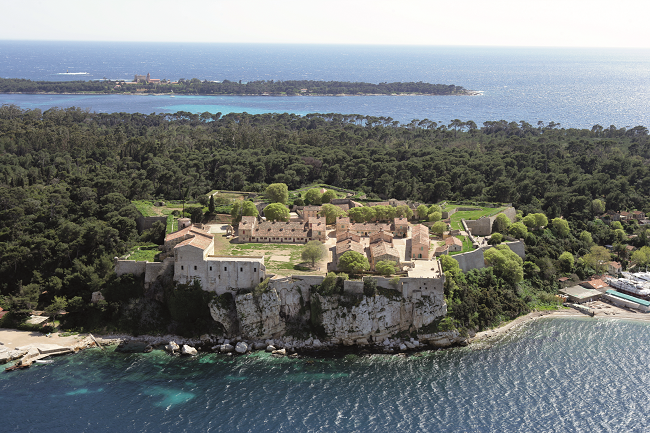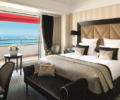Three Gorgeous French Islands to Explore
Metropolitan France has nearly 1,300 islands, fewer than 30 of which are permanently inhabited. We introduce three favourites, whose natural beauty, get-away-from-it-all atmosphere and many activities make them standout choices for year-round fun in the sun.
Ouessant: Rugged Beauty
As our stolid ferry shouldered the treacherous waves on the last leg of an eight-hour journey from Paris, I understood why Ouessant – France’s westernmost point – is called ‘the island at the end of the world’. Only five miles long and 2.5 miles wide, this perpetually windswept isle remains as it’s been for hundreds of years, when sheep farmers, fishermen and sailors were the only inhabitants.
Now, they are joined by artists and vacationers, happy to leave the world behind and traverse the island’s miles of biking and walking trails past lighthouses, vertiginous rocky cliffs, hidden beaches, rocky coves and endless mauve-hued meadows carpeted with wildflowers and wind-stunted shrubs. Though cars are permitted, Ouessant is a place to be savoured on foot or by bike, easily obtained at rental shops in all of the island’s hamlets. On our family ride to the Phare du Creac’h lighthouse (whose beams raked our living room at night), we were charmed by bunnies and wild pheasants ambling among the island’s famous black sheep, flower-bedecked stone cottages and solitary country churches. A morning was enough to visit the lighthouse museum and the eco museum for an overview of the island’s long history and culture, leaving the afternoon free to laze in the sun in a secluded cove among the glittering tidal pools. On our way back to our cottage, we stopped at La Tête en l’Air, whose irresistible weathervanes we’d noticed everywhere on the island: brightly coloured mermaids, ships, sheep, a crab, sea birds or a whale, all handmade in wood, made the perfect island memento.

Ouessant © creach
Lampaul’s modest village boutiques are another good place to stock up on local specialities like seaweed paté (an acquired taste), handmade caramels, sheepskin slippers, or a pot of NividiSkin’s hearty ‘storm balm’ made here with restorative nutrients extracted from seaweed harvested on the island.
In the evening we dined spectacularly on mussels my husband and daughter had pried off the rocks, lapping up the delicious broth with hunks of bread. We might have saved ourselves the effort – at a small market on Lampaul’s Place de l’Église, fishermen set out the morning catch, cleaned and perfectly filleted.
As we waited, relaxed and sun-kissed, for our ferry to depart, the boat dipped suddenly starboard as passengers flocked to the rails to watch a dolphin frolicking around our boat as though bidding us farewell and bon voyage.
When to go
Every season is beautiful (and windy) on this island, though winters are harsh. In May and June, late spring flowers, especially the giant calla lilies, hollyhocks and hydrangeas, are a big draw, and in summer swimming is popular.
Where to stay
There are several hotels, B&Bs and two campsites on the island, and homes to rent by the day or week (check the tourist website). Le Guen Odile guesthouse is a popular choice.
Ile de Ré: Sleepy Beauty
I couldn’t dig out my sunglasses fast enough on the taxi ride over the two-mile bridge linking La Rochelle to the Île de Ré, as I was blinded by the dazzling light reflecting off an endless expanse of sea and sky on a brilliant April morning. Within an hour, I’d dropped off my bags and was happily planted on a sunny terrace a few steps from beautiful Saint-Martin-de-Ré’s lively port, coaxing the succulent flesh from a prickly langoustine.
Abundant seafood, especially oysters gathered along the 18-mile island’s northeastern coast, is just one of the Île de Ré’s many enchantments. Wealthy Parisians snap up holiday homes here, but the island is hugely popular among families and day visitors, too – especially since the bridge to the mainland opened in 1988. So popular, that more than three million visitors flock here each year, mostly for the island’s sprawling sandy beaches, but also the miles of pristine walking and biking paths, protected landscapes, wildlife reserves and postcard-perfect villages dating back to medieval times.
In the morning, I hopped on my electric rental bike and followed the breezy coastal path to Ars-en-Ré, a Plus Beau Village de France, to explore the morning market. Among flowery India cottons and raffia bags, the first strawberries of spring closing time – I’d clocked 70km in a mere seven hours – and couldn’t wait for tomorrow to do it all again.
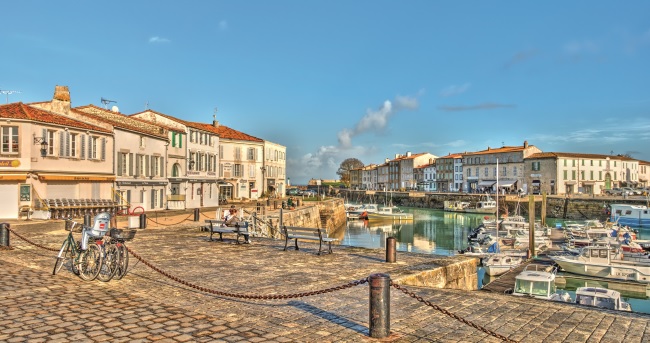
Saint Martin de Ré © mehdi33300 / shutterstock
When to go
In summer and school holidays it is packed and best avoided. May, September and October are idyllic.
Where to stay
On the Saint-Martin-de-Ré port, the 5-star Hôtel de Toiras offers gorgeous antique-filled rooms and a top-notch restaurant with a pretty port-facing terrace. A short walk from the port, Villa Clarisse offers modern suites, with a spa and pool in a lush garden courtyard.
Îles de Lérins: Treasured Islands
Viewed from the heights of Le Suquet, Cannes’ cobbled medieval old town, the Îles de Lérins glimmer like twin jewels in an azure sea. That’s how I first discovered the archipelago, which over the years has become my favourite getaway on the Côte d’Azur. A 15- and 20-minute ferry ride from Cannes’ old port, the islands are a mere hop and a world away from glitzy Cannes.
Less than a mile long and half a mile wide, vineyard-covered Île Saint-Honorat is home to 20 Cistercian monks, the island’s only inhabitants since 410, when, according to legend, Saint Honorat drove away a menacing dragon. Nowadays, the monks live in a 19th-century monastery and spend their days tending their vines and making award-winning organic wines along with a range of rainbow-hued spirits distilled from local herbs and fruits. Though the monastery is private, visitors can climb the scenic ruin of an 11th-century fortress for eye-popping views of Cannes, the Alpine range and the Cap d’Antibes, repose in one of the island’s three chapels, and visit the monastery’s Gothic church and gift shop, stocked with Saint-Honorat wines and other artisan products. To taste the monks’ seven vintages, stop in at the Lérina boutique at the ferry landing. Saint-Salonius (€95), made from 100% Pinot noir, is served to the jury of the International Film Festival and regularly served at Paris state dinners. Refreshing Saint-Pierre is a floral 100% Chardonnay and the shop’s best bargain at €26.
More than twice the size of Saint-Honorat, Sainte-Marguerite’s miles of cool, wooded paths shaded by Aleppo pines and towering eucalyptus crisscross the island, leading to a small lake and bird sanctuary to the southeast. In summer, day-trippers, scuba divers and boaters flock here for the island’s shimmering turquoise waters, secluded beaches and scenic picnic spots.
At the west of the island, the 17th-century Fort Royal museum and military prison was the infamous home of the Man in the Iron Mask. At the Musée de la Mer, inside the fort, you can learn the island’s long and fascinating history – from the Ligurians and Romans to medieval times – amidst the remains of a Roman vault, with displays of local shipwreck plunder.

Îles Marguerite © KELAGOPIAN
When to go
If you don’t mind the crowds, both on land and at sea, summer is a lovely time to visit, but in spring and autumn you’ll have the paths and beaches almost to yourself. September is ideal for swimming and snorkelling while the Mediterranean is still warm.
Where to stay
On Saint-Honorat you can arrange a week-long contemplative retreat with the monks at the Abbaye de Lérins; you supply your own sheets and towels and meals are taken in the refectory in silence. There is no lodging on Sainte-Marguerite, but on the other side of the world in Cannes, the historic Hôtel Barrière Le Majestic and its star-studded Le Fouquet brasserie offer a luxe setting and fabulous views of the islands.
From France Today Magazine
Lead photo credit : Ile de Ré © Shutterstock
Share to: Facebook Twitter LinkedIn Email
More in beach, coastal towns in France, French islands, islands
Leave a reply
Your email address will not be published. Required fields are marked *

